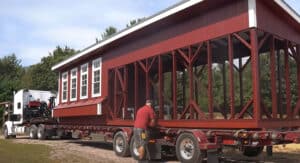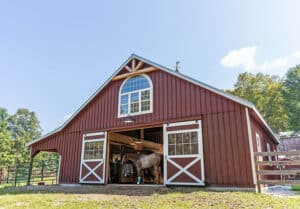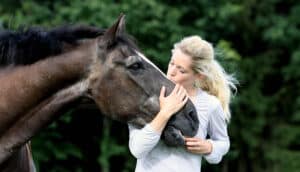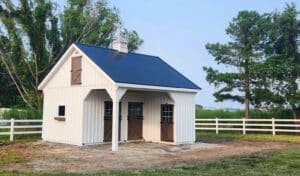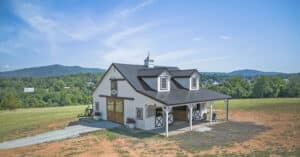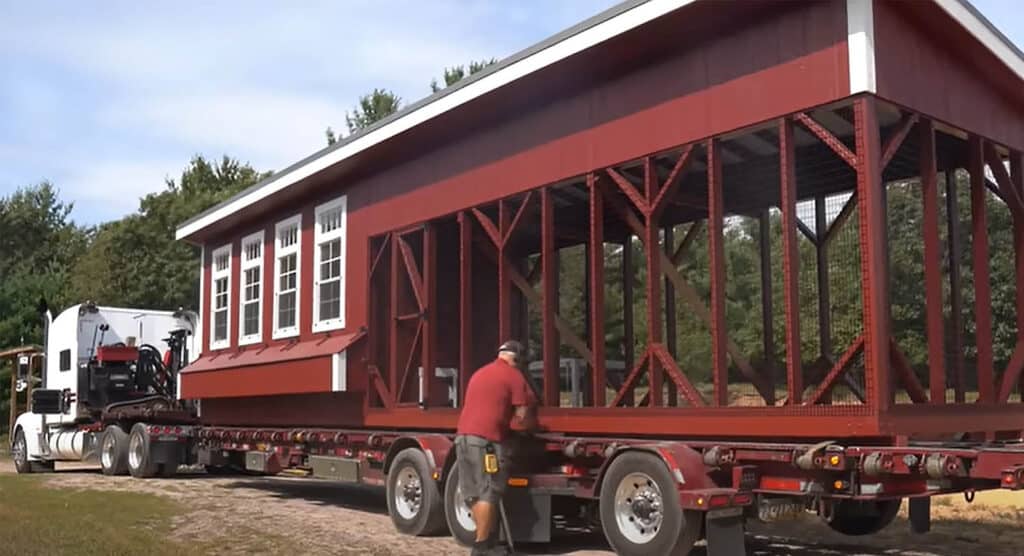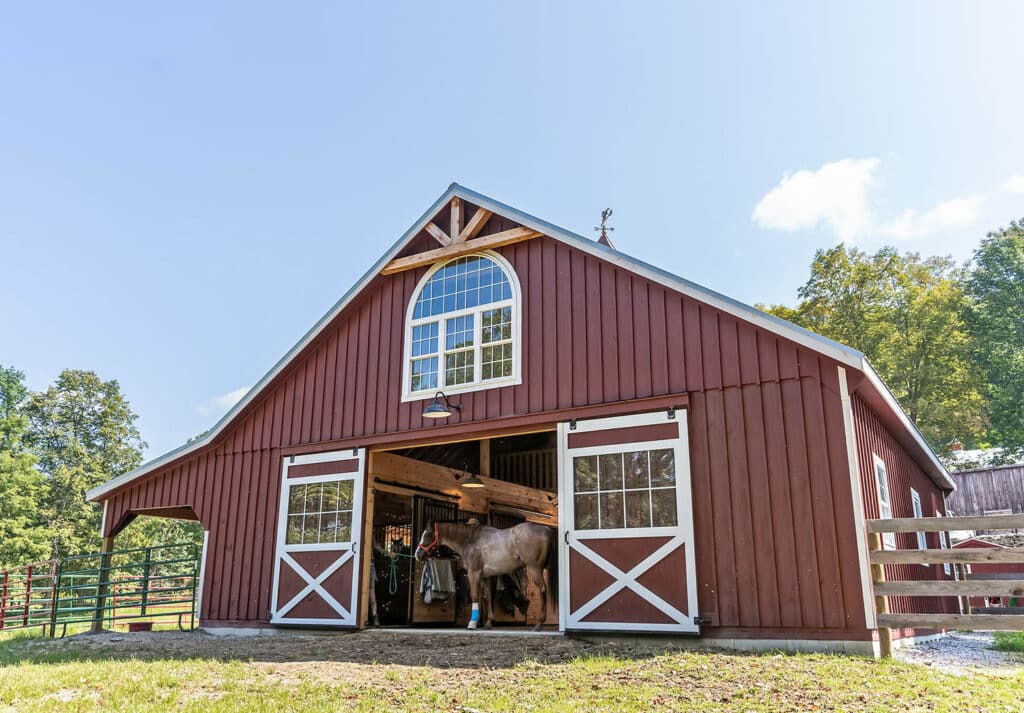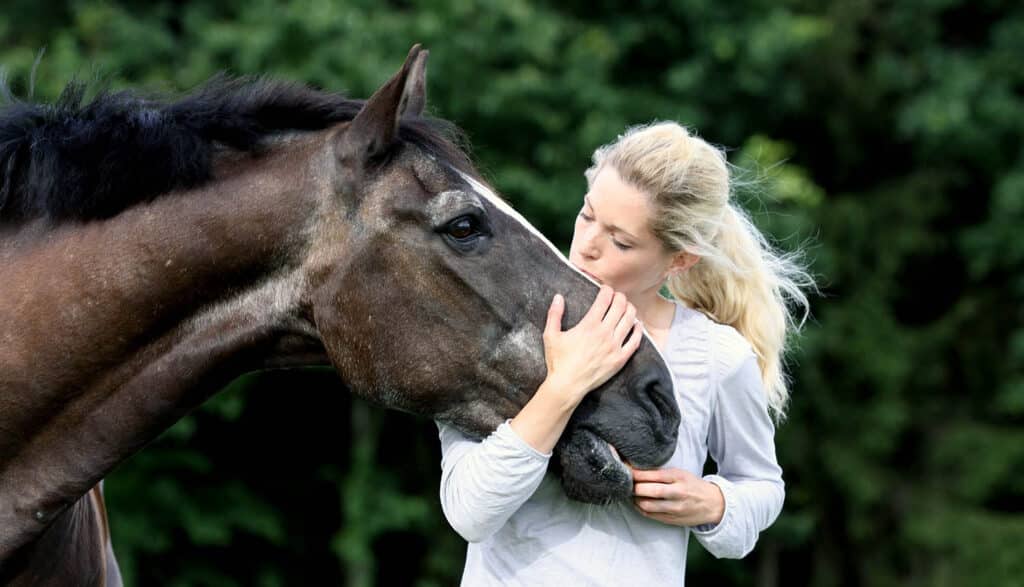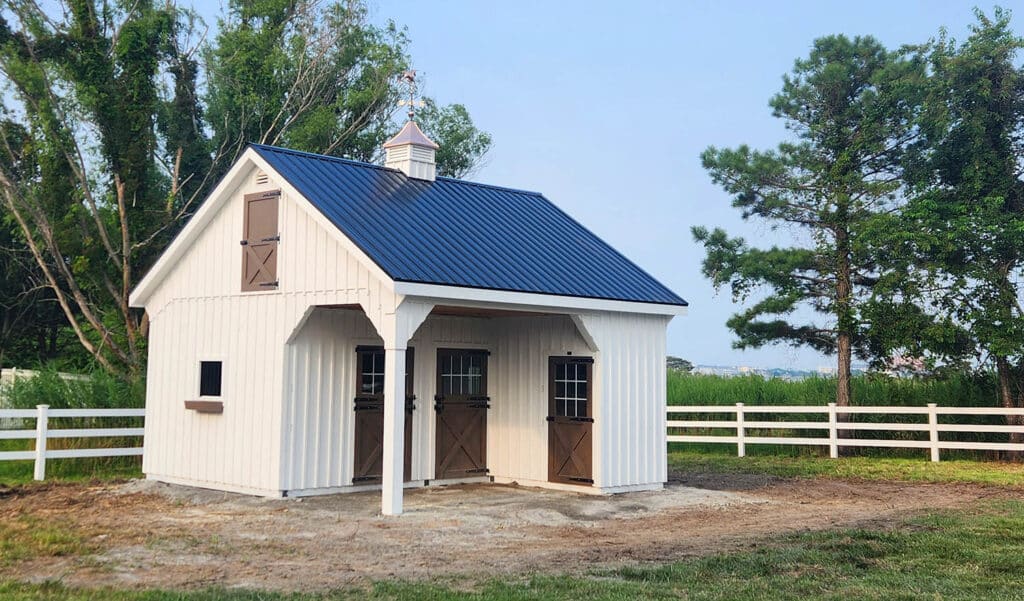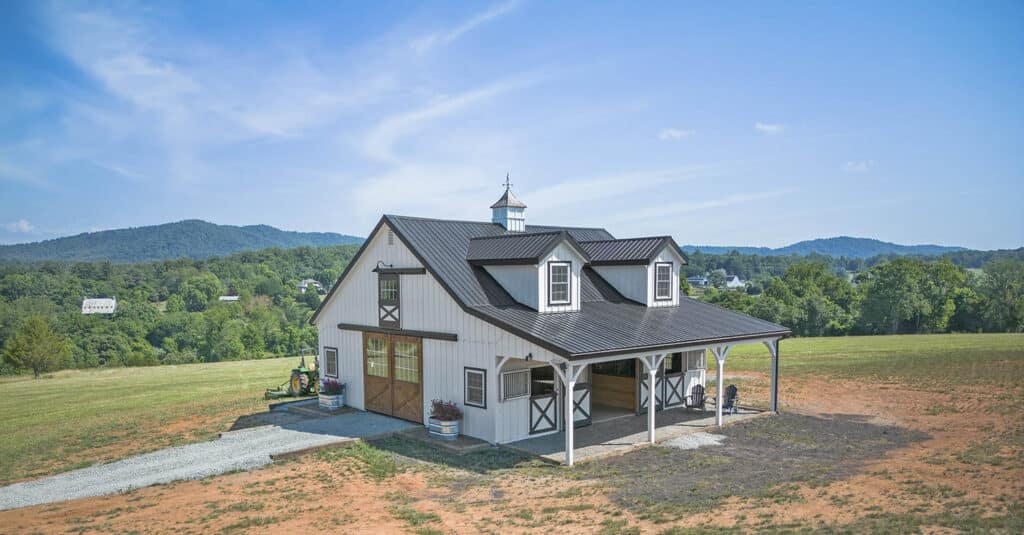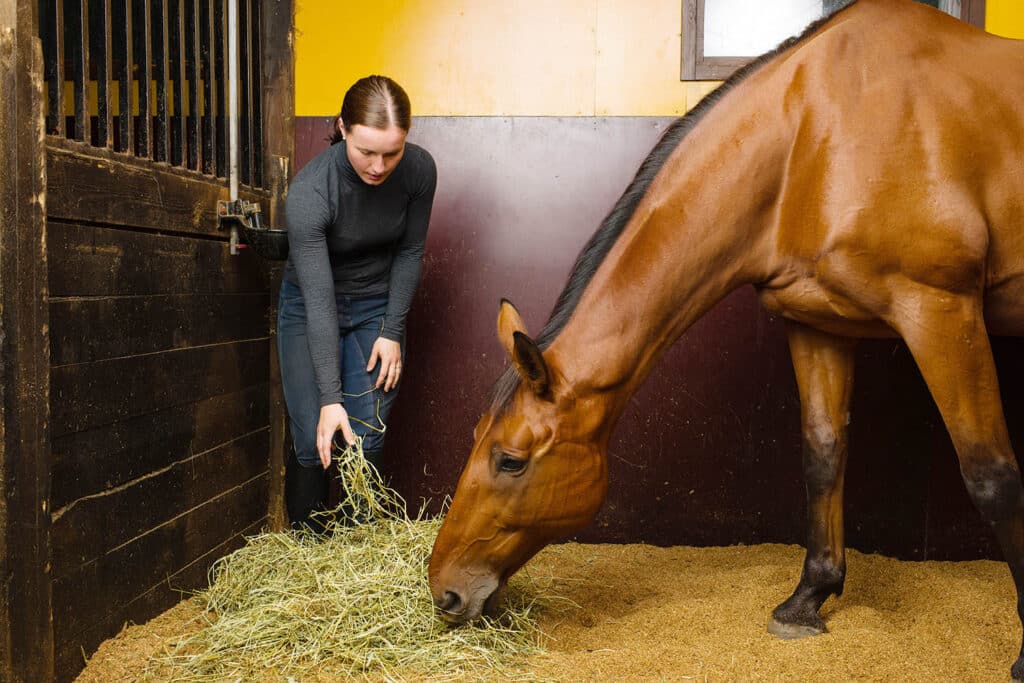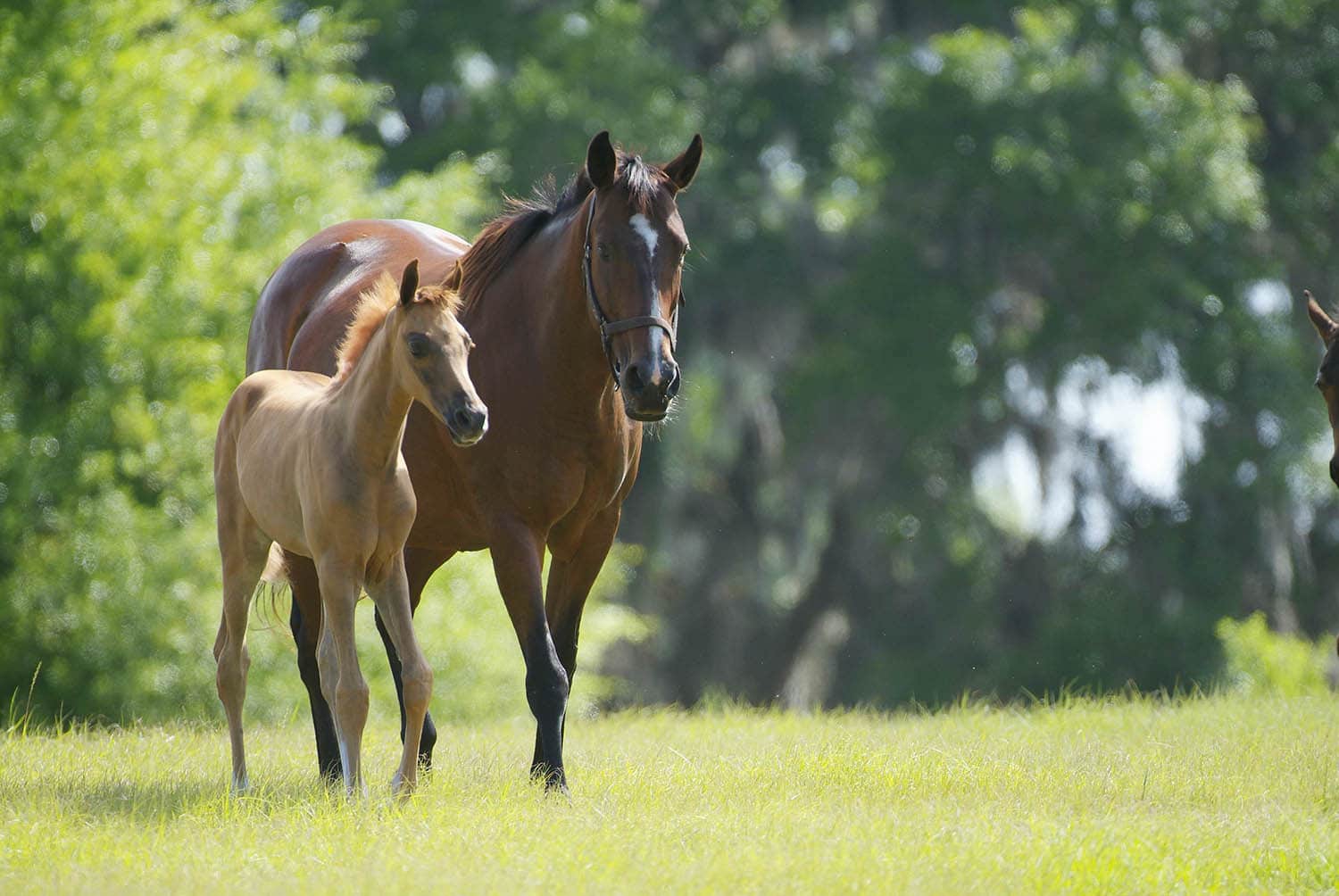 When it comes to horse breeding much has changed over recent decades. Science-based research on the noble horse and its social and medical needs has brought horse breeding practices to a higher standard of care and along with that modern building practices offer much needed improvements to breeding horses’ lifestyles.
The investment required to purchase excellent quality horse breeding stock is significant, so ensuring that the animals are as well-cared for and as protected from injury or upset as possible makes perfect sense.
When it comes to horse breeding much has changed over recent decades. Science-based research on the noble horse and its social and medical needs has brought horse breeding practices to a higher standard of care and along with that modern building practices offer much needed improvements to breeding horses’ lifestyles.
The investment required to purchase excellent quality horse breeding stock is significant, so ensuring that the animals are as well-cared for and as protected from injury or upset as possible makes perfect sense.
What Construction Materials Should You Choose
Wood construction offers a natural insulation factor, and it is kinder to a horse’s joints if impact occurs due to an errant kick or fall than stone or cement. Wood should be sealed at time of construction to make the surface ‘deep clean’ friendly. Hygiene wise sealed/painted breeze block construction is popular at vet clinics and high traffic breeding barns such as Thoroughbred farms. All types of structural interior stall walls can be clad with washable panels to facilitate an easy clean surface. Any metal sided walls of a building should be shielded by wood to prevent injury to the horses. The interior of a wood building offers a comfortable environment for the equine occupants both sound wise and temperature wise. Depending on the regional location it is generally easier and cheaper to construct than a stone-based product. The advent of modular barns becoming available nationwide in a variety of designs, has significantly improved access across the U.S.A. to excellent quality wood barn builds, such as the renowned sturdy Amish construction. Wood framed barns can be clad in either wood, metal or plastic siding with many low maintenance siding options available.Special Features to Consider
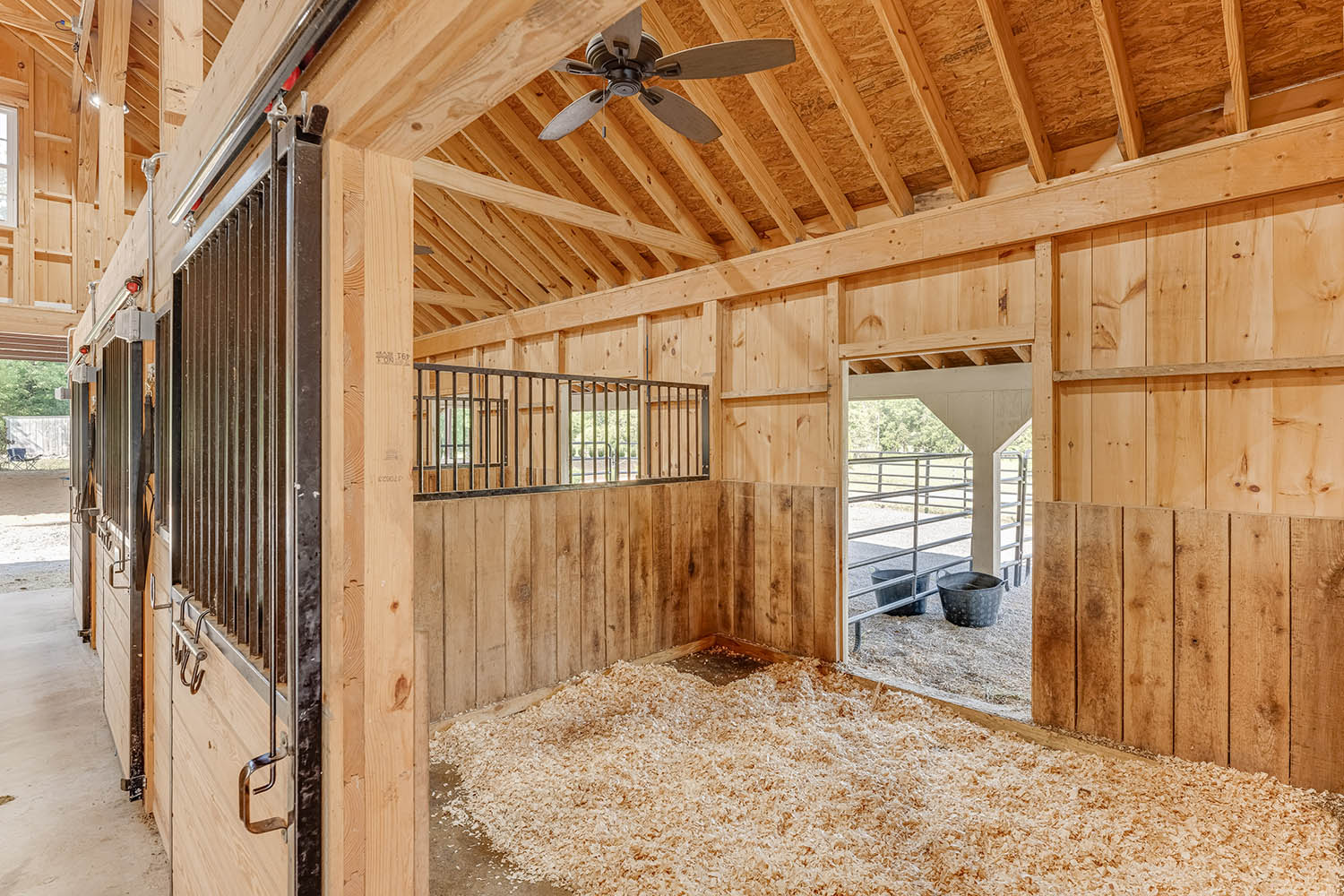 Freedom of movement is essential for all horses and for mares and foals it is no different. By offering in/out options with exterior access Dutch doors from large mare/foal stalls, daily turnout can be provided in all weathers without the need for handling. Horses appreciate the option of being able to choose where they prefer to be, and for foals that are by nature vulnerable to extreme weather conditions, the mare appreciates the option to choose their location.
Double access stabling with the horses being allowed to choose their location in or outside, also provides their human caregivers with an opportunity to thoroughly clean stalls while the occupants are outside. This makes daily chores easier and safer to manage, especially when children or inexperienced staff are working the mucking out shifts and we all know how much an inquisitive foal enjoys tipping over skips or wheelbarrows. While daily handling and leading of foals is a good idea training wise, for the busy barn this can be a helpful option.
Stall doors are generally 48” wide. While this is sufficient to bring mares in and out with foals at their sides, a slightly wider doorway to 60” can make life easier.
Sliding doors are convenient one-handed designs to use as front stall doors. Within the barn swinging doors are best avoided for several reasons. Here’s more information to ensure the design is, “Opening The Door To Stall Safety.”
All foals love to jump around so a confined space needs to be well-designed to optimize safety first. It is important that stall grills are high enough and that the grill bar space is narrow enough widthwise, to ensure no tiny hooves become caught between the grill bars (ideally spaced three inches or less). Stall windows should similarly be shielded to offer protection to tiny feet and legs with appropriate grill construction and heights.
Freedom of movement is essential for all horses and for mares and foals it is no different. By offering in/out options with exterior access Dutch doors from large mare/foal stalls, daily turnout can be provided in all weathers without the need for handling. Horses appreciate the option of being able to choose where they prefer to be, and for foals that are by nature vulnerable to extreme weather conditions, the mare appreciates the option to choose their location.
Double access stabling with the horses being allowed to choose their location in or outside, also provides their human caregivers with an opportunity to thoroughly clean stalls while the occupants are outside. This makes daily chores easier and safer to manage, especially when children or inexperienced staff are working the mucking out shifts and we all know how much an inquisitive foal enjoys tipping over skips or wheelbarrows. While daily handling and leading of foals is a good idea training wise, for the busy barn this can be a helpful option.
Stall doors are generally 48” wide. While this is sufficient to bring mares in and out with foals at their sides, a slightly wider doorway to 60” can make life easier.
Sliding doors are convenient one-handed designs to use as front stall doors. Within the barn swinging doors are best avoided for several reasons. Here’s more information to ensure the design is, “Opening The Door To Stall Safety.”
All foals love to jump around so a confined space needs to be well-designed to optimize safety first. It is important that stall grills are high enough and that the grill bar space is narrow enough widthwise, to ensure no tiny hooves become caught between the grill bars (ideally spaced three inches or less). Stall windows should similarly be shielded to offer protection to tiny feet and legs with appropriate grill construction and heights.
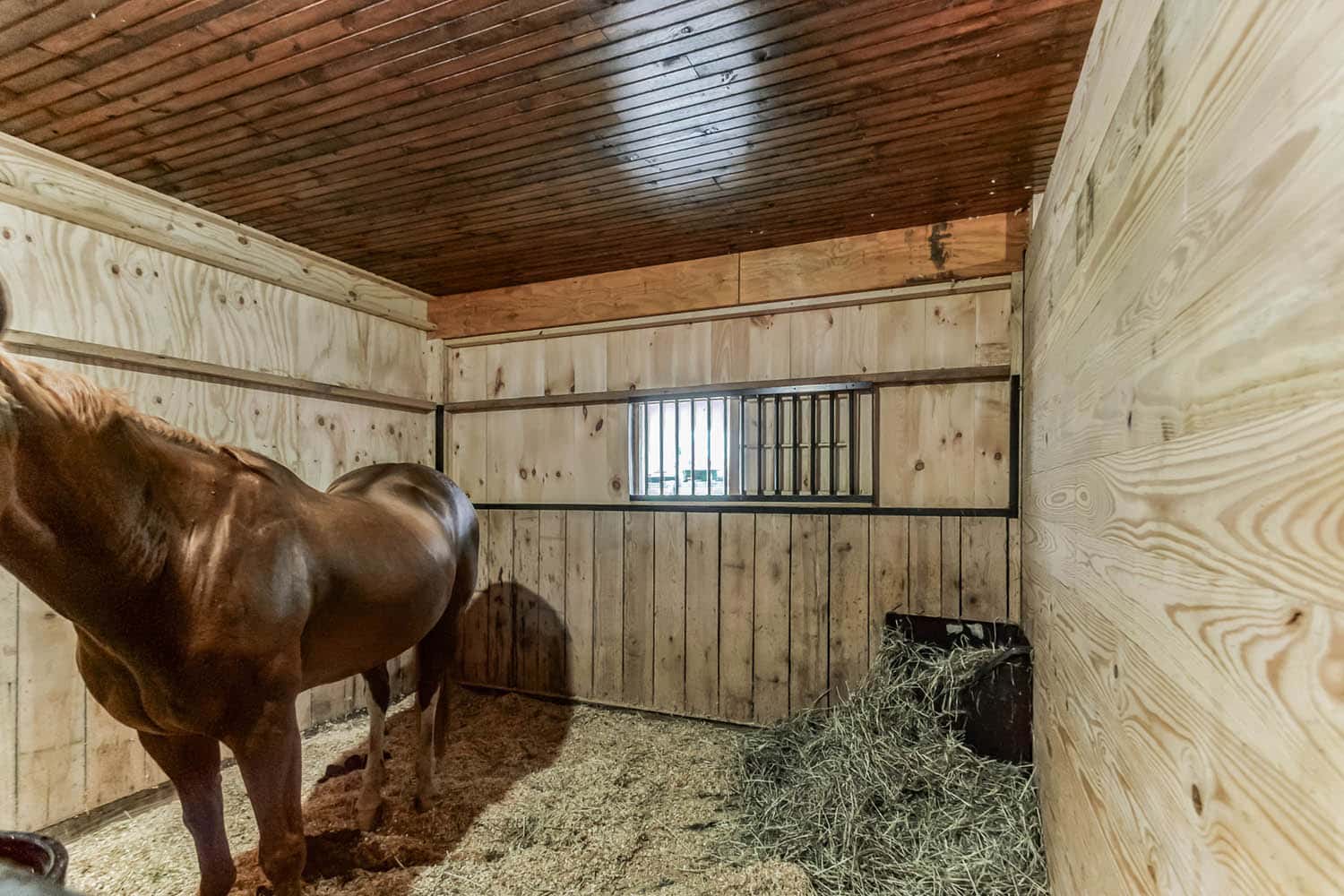 Solid wall partitions 9’ or 10’ high are a good idea versus a partial grill option. Neighboring horses cannot then intimidate the foal and worry a maiden mare. Solid stall partitions offer a peaceful stall haven for respite for mare/foal and help ensure a good quality rest period for both which is a positive health benefit.
Removable stall partitions for seasonal adjustments to stall size between gestation/parturition and ‘foal at foot’ periods versus weaning time/regular barn use can work well ensuring larger stall sizes are available as required and lessens the need for excessive workload or time frame for conversion.
Small stalls invite accidents and injury to the foal. The likelihood of a mare inadvertently stepping on a foal’s fragile fetlock joint or tendon is much higher in a small space than a large one. Though the stall should not be so large as to permit the adult horse to trot around its interior.
Tip: As an experienced performance horse-breeder I have found substituting the straw with shavings post-natal, once the foal’s navel has fully healed, helps prevent the foal’s legs from being hidden beneath the thick straw bed and being stepped on by Mom when it is sleeping or laying down.
Solid wall partitions 9’ or 10’ high are a good idea versus a partial grill option. Neighboring horses cannot then intimidate the foal and worry a maiden mare. Solid stall partitions offer a peaceful stall haven for respite for mare/foal and help ensure a good quality rest period for both which is a positive health benefit.
Removable stall partitions for seasonal adjustments to stall size between gestation/parturition and ‘foal at foot’ periods versus weaning time/regular barn use can work well ensuring larger stall sizes are available as required and lessens the need for excessive workload or time frame for conversion.
Small stalls invite accidents and injury to the foal. The likelihood of a mare inadvertently stepping on a foal’s fragile fetlock joint or tendon is much higher in a small space than a large one. Though the stall should not be so large as to permit the adult horse to trot around its interior.
Tip: As an experienced performance horse-breeder I have found substituting the straw with shavings post-natal, once the foal’s navel has fully healed, helps prevent the foal’s legs from being hidden beneath the thick straw bed and being stepped on by Mom when it is sleeping or laying down.
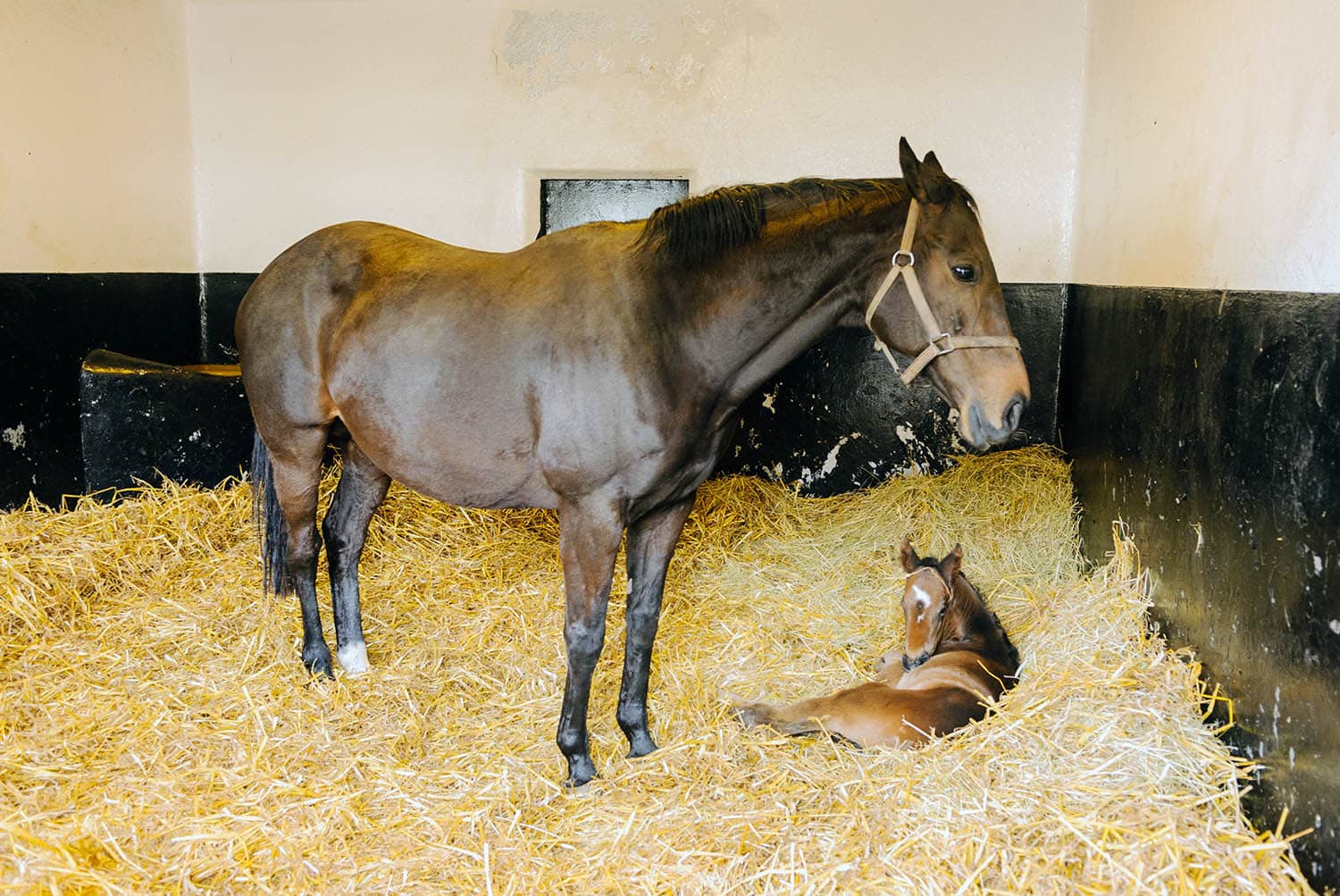 Note: Straw is recommended for use over shavings during parturition and immediately thereafter to avoid transmission of the potential bacterial hazard present in shavings through the foal’s naval and to also provide a softer landing for the foal should it fall over during its ‘wobbly’ stages. Select wheat or oat straw in preference to barley, as barley straw spirals can cause an ingestion upset if the equines decide to taste its delights.
Some horse breeders opt to include a rail/bar across the corner of the stall or divide the stall and provide a barriered space the mare is unable to enter where the foal can duck underneath and find both his own grain feeder and space to sleep. My personal preference is to use a creep feed option for the foal and to avoid placing any obstacles within the stall space that can present an injury risk for a rearing or prancing horse.
If you plan to breed horses on site, then a large, clear indoor area for in-hand handling of the process either for AI collection or live cover should be available. An adjacent ‘lab room’ is a boon for production needs. Often these spaces are constructed adjacent to the mare barn in a garage style set-up with overhead doors and matted or slip-free floors and structures with higher ceilings.
AI cover of mares can easily be accomplished stall side, but larger operations will benefit from a mare stanchion where the vet can complete their job in safely without worry the mare will kick out, errantly move or back into expensive medical equipment.
Note: Straw is recommended for use over shavings during parturition and immediately thereafter to avoid transmission of the potential bacterial hazard present in shavings through the foal’s naval and to also provide a softer landing for the foal should it fall over during its ‘wobbly’ stages. Select wheat or oat straw in preference to barley, as barley straw spirals can cause an ingestion upset if the equines decide to taste its delights.
Some horse breeders opt to include a rail/bar across the corner of the stall or divide the stall and provide a barriered space the mare is unable to enter where the foal can duck underneath and find both his own grain feeder and space to sleep. My personal preference is to use a creep feed option for the foal and to avoid placing any obstacles within the stall space that can present an injury risk for a rearing or prancing horse.
If you plan to breed horses on site, then a large, clear indoor area for in-hand handling of the process either for AI collection or live cover should be available. An adjacent ‘lab room’ is a boon for production needs. Often these spaces are constructed adjacent to the mare barn in a garage style set-up with overhead doors and matted or slip-free floors and structures with higher ceilings.
AI cover of mares can easily be accomplished stall side, but larger operations will benefit from a mare stanchion where the vet can complete their job in safely without worry the mare will kick out, errantly move or back into expensive medical equipment.
Rooms With a View
Layout of the barn should facilitate an easy view of the equine living quarters by caregivers while working in the barn and turnout areas should be viewable from the farm residence if possible.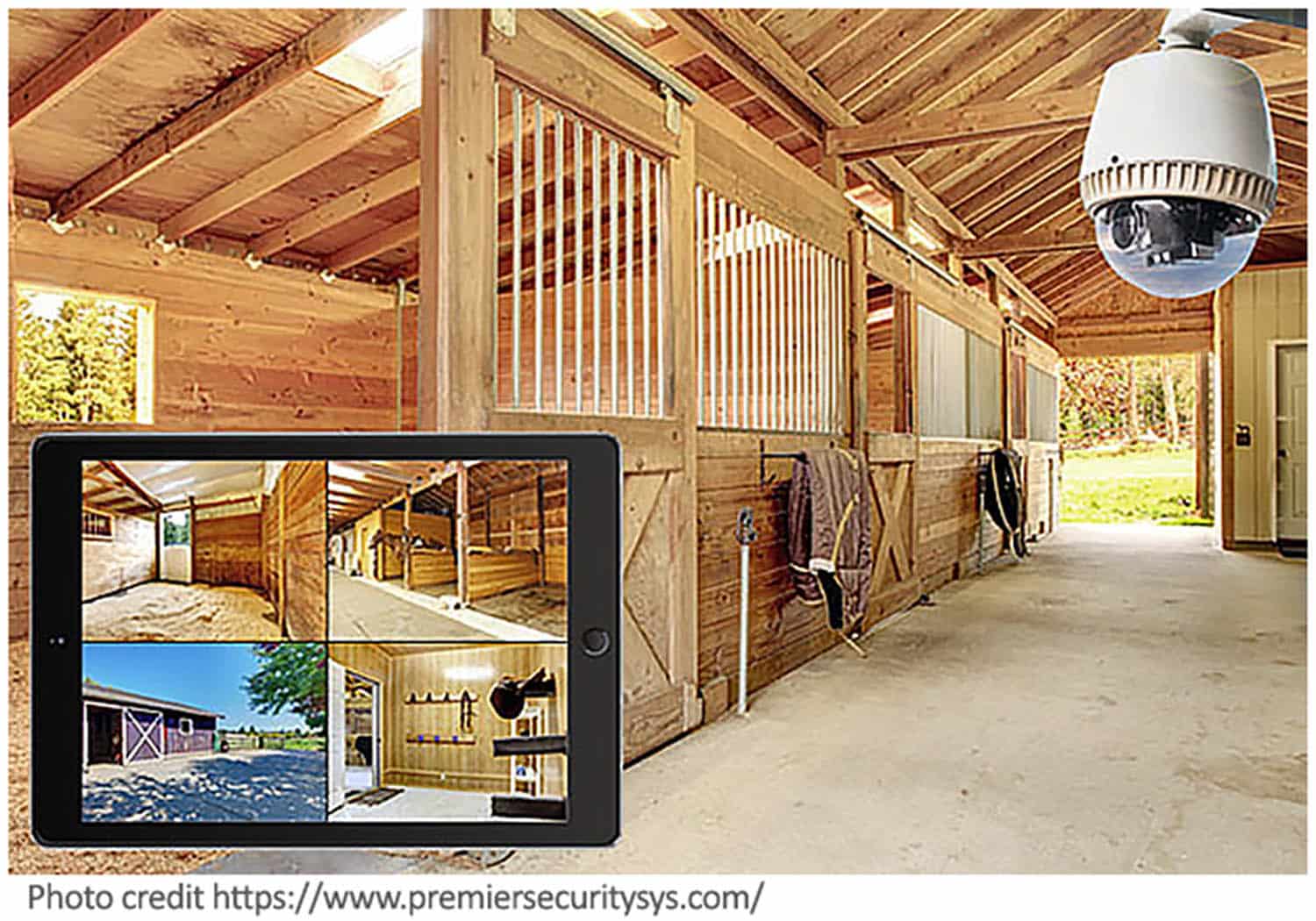 The advent of technology and security monitoring systems now allow easy options to have ‘eyes’ on the mares and foals 24/7.
The advent of technology and security monitoring systems now allow easy options to have ‘eyes’ on the mares and foals 24/7.
Select Safe Horse Fencing
Fencing for mares and foals needs to both contain them and protect them from injury. Intrusion to a paddock by loose dogs or predators such as coyote can cause panic in the mare and thus her foal and can result in injury or even death of the foal. Special wire fencing products are available specifically designed for horse breeding farms. But a securely board-fenced pasture is also suitable. Barbed wire should never be used to fence horse pasture due to the high risk of injury. Also take care if utilizing taught spiral electric rope fencing as it won’t break easily during impact or entanglement. Tip: Consider fencing horse pastures with the boards installed on the outside of the paddock posts. If a horse in a blind panic runs through a fence or attempts to jump it, the fence will break away from the animal thus lessening the risk of impalement injuries.Lighting Options
While bright LED lighting options may seem an energy saving and efficient method to light your horse barn, consider that the LED light can be unsettling to horses who cannot shield their eyes from its piercing glare. For mares close to parturition and mares with foals at foot, consider a secondary lighting option that offers soft ambient light coverage.Site Your Barn to Offer Peace and Quiet
As any mother will tell you, we appreciate peace and quiet to allow both us and our babies to rest. Stress-inducing high traffic barns; fractious equine neighbors; little humans excitedly running around barn at play; barking dogs; noisy equipment whizzing up and down the aisleway or around the barn are all factors that can cause unnecessary angst in the mare, and thus, her foal.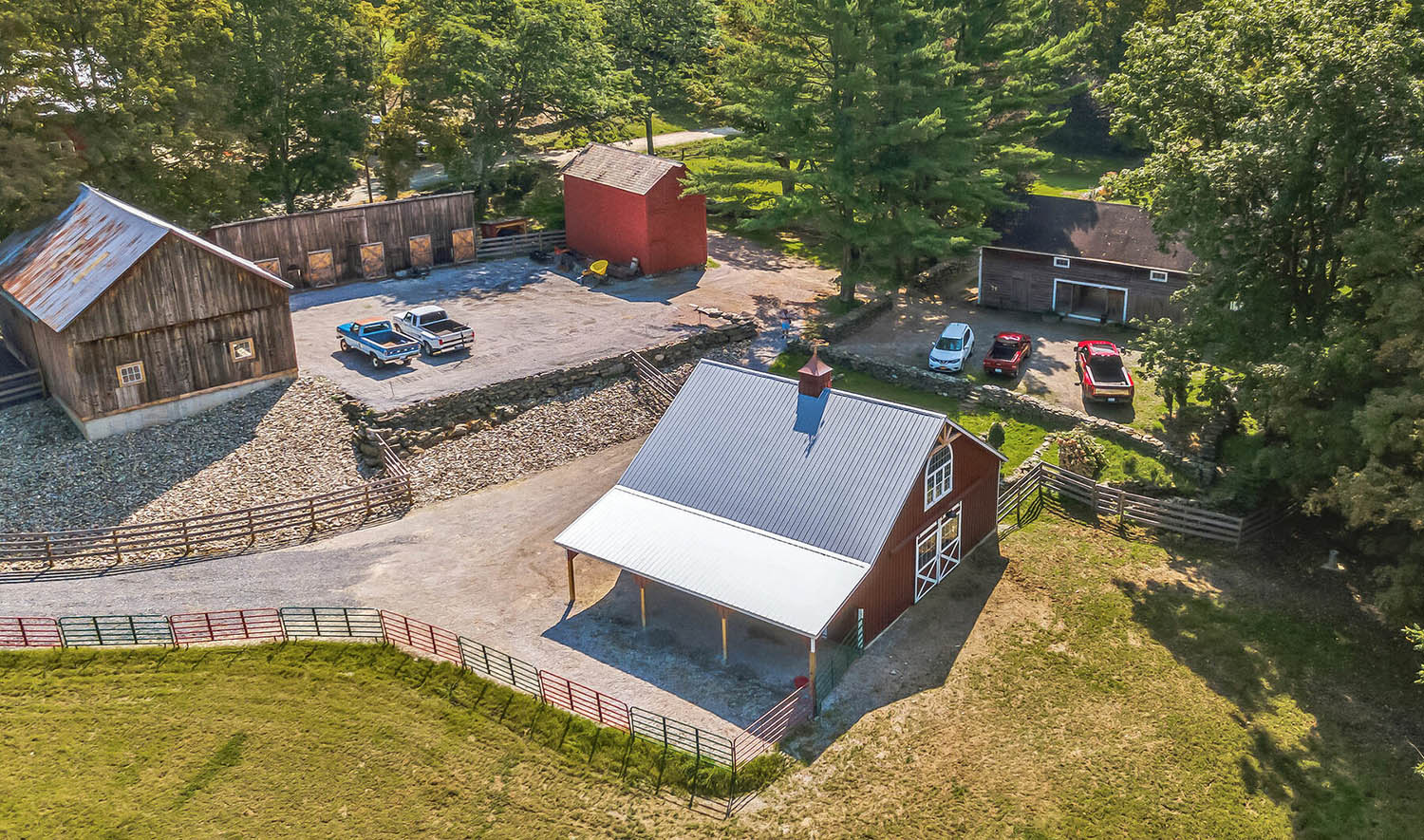 Site your barn carefully to consider access and human and horse traffic flows, especially if you operate a multi-use horse facility.
Site your barn carefully to consider access and human and horse traffic flows, especially if you operate a multi-use horse facility.


